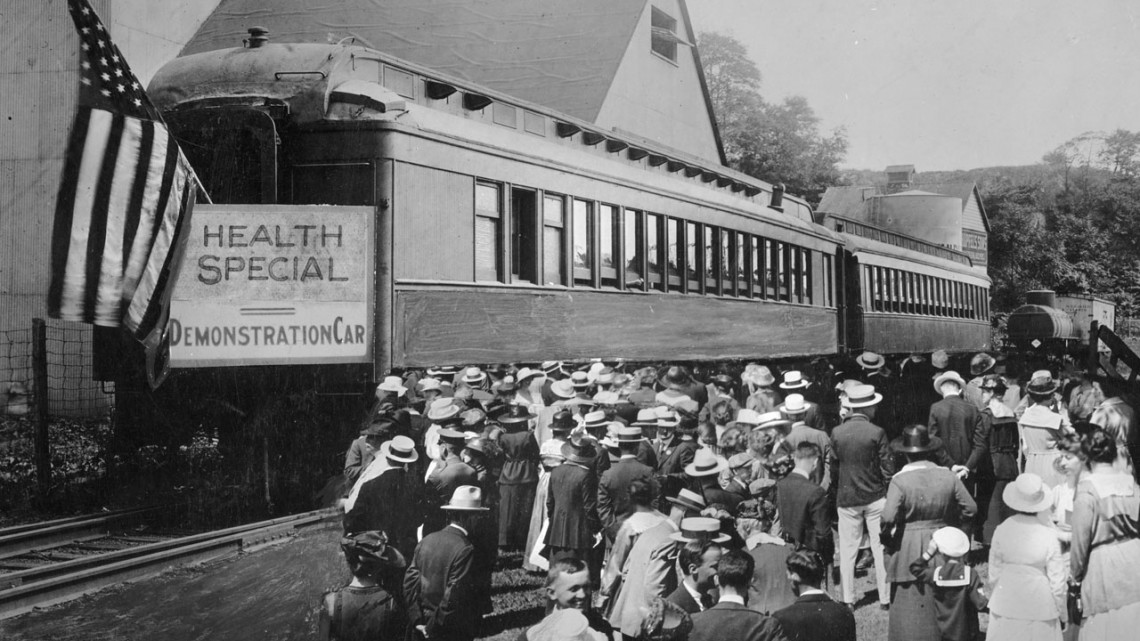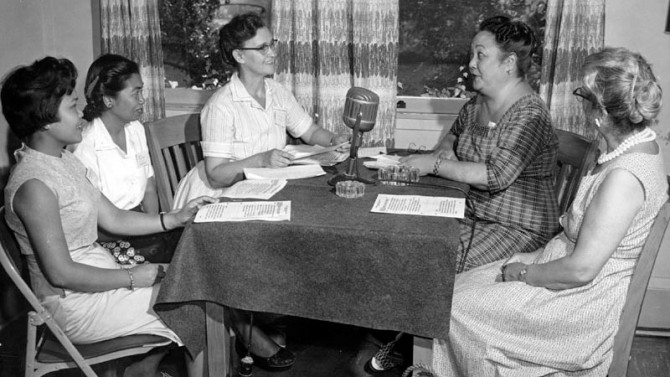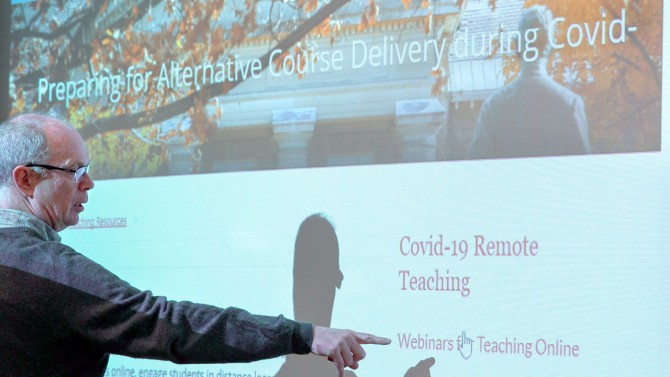
The Cornell Demonstration Train brought education and live demonstrations to upstate communities, in cooperation with the U.S. Department of Agriculture and the New York Central and Lehigh Valley railroads.
Snail mail to Wi-Fi: Cornell’s history of remote instruction
By Daniel Aloi
Generations before Cornell’s shift to online classes this semester due to the coronavirus pandemic, the university was making strides in remote instruction – including some of the earliest, and one of the largest, distance learning programs in the United States.
“Cornell was among the pioneers of extension education, particularly in home economics and nature study, with Liberty Hyde Bailey being a driving force behind both,” said Corey Ryan Earle ’07, a visiting lecturer in American studies who teaches a popular course on Cornell history.
Bailey, a horticulturist and the College of Agriculture’s first dean (1903-13), believed that education’s primary mission was to serve the people. As a professor in the 1890s, he led extension and outreach – farm visits, home studies and bulletins. With state funding secured for a nature study program, he hired naturalist Anna Botsford Comstock, B.S. 1885, in 1898; and began the Rural School Leaflet in the early 1900s, published at Cornell and distributed for more than 50 years.
“He felt strongly about bringing education and knowledge beyond the walls of the university and into rural communities. It’s a great parallel to what’s happening now,” Earle said.
Bailey “placed great emphasis on women’s education, and so it was in 1900 that he invited Martha Van Rensselaer to campus,” said Eileen Keating, university records manager and archivist in the College of Human Ecology. “He had been successful in developing the Farmer’s Reading Course in 1896,” which covered such topics as soil, how plants get nutrients and rationing feed for farm animals. “And now he wanted MVR to do the same for women,” Keating said.
Bailey sent a letter to rural women across the state in 1900, asking them which topics they would like to have addressed. The letter received 2,000 responses. In 1901, Van Rensselaer designed a correspondence course, the Reading Course for Farmers’ Wives, providing homemakers with information on timesaving steps, sewing, and keeping a garden as an adjunct to the farm kitchen. “It was so well received, in 1903 three courses for credit were offered on campus, and by 1907 the Department of Home Economics was established in the College of Agriculture,” Keating said.
Beginning in 1908, Van Rensselaer and Flora Rose co-directed the new department, which became the School of Home Economics in 1919. The College of Home Economics was established in 1925 and in 1969 became the College of Human Ecology.
“The college was also ahead of its time when using radio and television” as part of its extension mission, Keating said. She cites two examples from the 1940s: professor of textiles and clothing Helen Powell Smith’s “Let’s Make A Dress” radio program, and professor of food and nutrition Hazel Hauck, who appeared on the Voice of America (VOA), which provided home economists with a way to spread their message internationally.
“Remote learning was not the term used at the time,” Keating said, “but faculty knew they had a mandate to get information to the public, and they used the available technology to do just that.”
Earle’s brother, Evan Fay Earle ’02, M.S. ’14, is the Dr. Peter J. Thaler ’56 University Archivist in Cornell University Library’s Division of Rare and Manuscript Collections. He pointed out two family connections to Cornell’s extension and distance learning history.
“Our great uncle Paul Hoff, M.S. ’40, who was on the faculty in extension/ag engineering, had a role in the Cornell Demonstration Train,” which brought farming and home economics education and training – such as demonstrations on how to can foods at home – to rural communities via railroad, Evan Earle said.
Cornell’s worldwide Food Industry Management program was started by their grandfather, Wendell Earle, M.S. ’48, Ph.D. ’50, during his time on the faculty in agricultural economics, he said.
The program began in 1964 as the Food Industry Home Study Program, one of the largest distance learning programs in the U.S. It had up to 18,000 students at its peak, with students mailing in their assignments and completed exams; some of them later used fax machines until the added convenience of email in 1998.
It was renamed the Food Industry Management Distance Education Program in 1996, when video, CD-ROM and the World Wide Web contributed to enhanced course design, interactive training, and learning opportunities in more than 40 courses in supermarket, food distribution and convenience store operations.
“These examples brought teaching in a nontraditional sense, but providing the high-quality content that one could receive from on-campus learning, based on research at the university,” Evan Earle said.
Cornellians have pioneered technologies crucial to today’s virtual learning environments – including online video chat for personal computer users (with CU-SeeMe in the 1980s) and desktop videoconferencing with SightSpeed. The latter began as a research project by Toby Berger, professor emeritus of electrical and computer engineering, and co-founders Aron Rosenberg ’02 and Brad Treat, MBA ’02, now a visiting lecturer at the Samuel Curtis Johnson Graduate School of Management. And the co-founders of Blackboard Inc., Daniel Cane ’98 and Stephen Gilfus ’97, first developed the learning management platform while they were Cornell students.
Today, Cornell extension brings education to communities across the state and around the world; and the university’s external education initiatives, including executive education at Cornell Tech, ILR in New York City and AAP NYC, incorporate distance learning and the online learning platform eCornell.
As the university begins online classes this week, faculty members are diving into a range of modern educational technology.
“Faculty are thinking about the most important elements of their in-person teaching and how to translate and even enhance them in an online format,” said Julia Thom-Levy, vice provost for academic innovation and professor of physics in the College of Arts and Sciences. “One such area is active learning, where all students are engaged and work through the most difficult concepts, with frequent feedback from their instructors.”
Cornell instructors are exploring innovative and creative ways to engage with students online, she said.
“I think the work we are doing now,” Thom-Levy said, “will shape the way we teach going forward in unexpected ways.”
Media Contact
Get Cornell news delivered right to your inbox.
Subscribe



